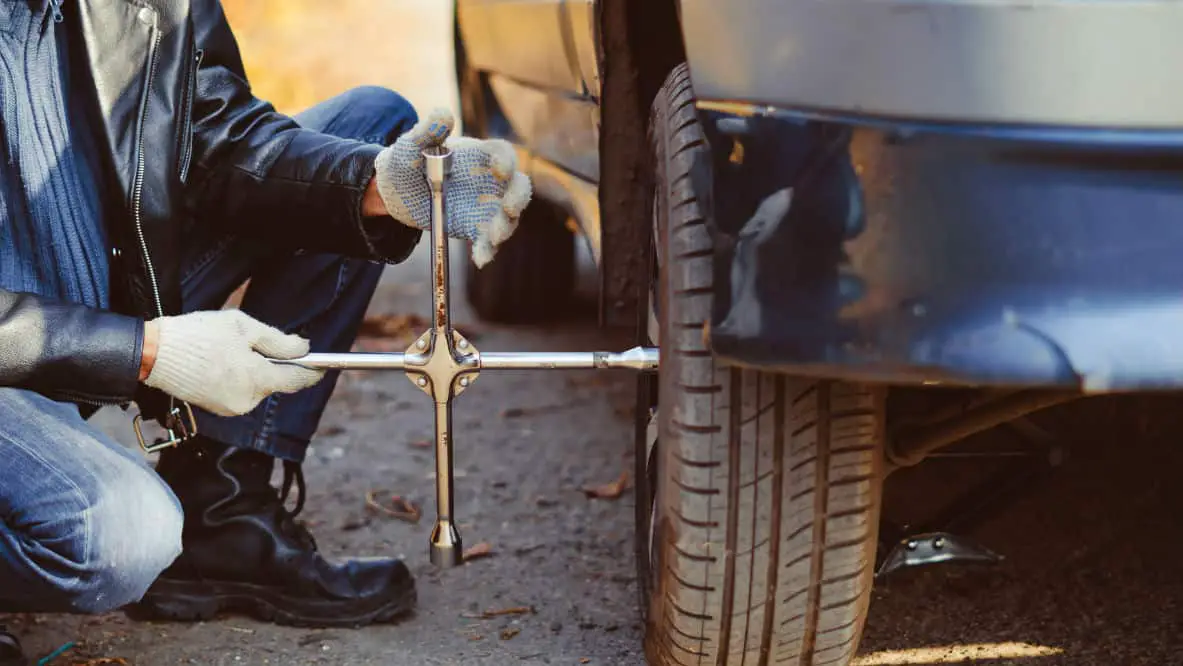A lot of drivers will come back to where their cars are parked and will realize that they have a flat tire. Some may be a bit unfortunate and may experience the stiffening of their steering wheels when driving. Hence, they will pull over and will only come to realize that they have a flat tire.
What do you do when you have a flat tire? You may also be wondering how to fix a flat tire on a car. In all honesty, some people may just exchange the flat tire for their spare and take the tire to a tire shop for repairs. If the damage is irreparable, then you ought to consider getting a new tire.
Nonetheless, if you want to fix your car’s tire yourself, there are several do-it-yourself methods that you can follow. However, before you attempt to be a hero and save the day, you should first know what you’re doing, and follow step-by-step instructions. Further, the task of repairing a tire will be more manageable so long as you have the right tools to get the task done. With that said, continue reading below to learn the DIY instructions on how to fix a flat tire on a car.
How to Fix a Flat Tire on A Car: A Useful Guide
The Materials
As mentioned, you should not attempt to fix a flat tire if you don’t possess the right tools. In this instance, you will need tools that can remove the tire off of its wheelbase. These tools will be a jack and a wrench. Some car manufacturers include these when you purchase your vehicle. You will also need a spare tire to use while your tire is being fixed. If you don’t have a spare tire, then you will need to fix your tire immediately using a repair kit.
A repair kit contains tire plugs, an air compressor, and pliers. Some repair kits may also include temporary sealants. If you don’t have an air pump, you will have to take the tire to a shop or to the gas station to get the tire inflated. Nevertheless, for the DIY repair process, it is usually best when you have your own air pump.
The Steps
- Finding the Leak
This can be either the first or the second step, but regardless, the leak in your flat tire needs to be found. Sometimes you may be fortunate enough to actually see an intruding object lodged in your tire. Other times, the task of finding the leak may be a bit tedious. If something is stuck in the tire, you may need pliers to help get it out. When there is no visible source of the leak, you should inflate the tire and feel or listen for escaping air. Some people will also attempt to find the leak by washing the tire with soapy water. Doing this will cause bubbles to form at the puncture site.
- Fixing the Leak with a Sealant or Plug
In a patch kit, there is a tool to assist you with fitting the plug to the hole. Before applying the plug, it is necessary to apply adhesives to it to keep it in place. Then, insert the plug into the hole. It is quite alright to leave a few inches sticking out as you can cut off the excess when it dries. Sealants are applied to defective tires the same way you will inflate it through the valve. It is unnecessary to remove the tire if you are using a sealant as you have to rotate the tire on the wheel to evenly distribute the sealant. Please note, the sealant is only a temporary and quick method of repair.
- Removing the Tire
Begin the process of removal by loosening the nuts with the help of the wrench. Once done, affix the jack, making sure it is on level ground and jack the car up. You should not attempt to jack up a car on an incline. You should put the car in park or neutral gear and make sure that the emergency braking system is engaged so that your car will not roll. Once your car is jacked up, it is already safe for you to quickly remove the nuts from the bolts completely and remove your tire. You should secure the nuts for reapplying the tire.
- Inflating the Tire and Positioning It Again
Even if you use the sealant method, you will still have to use the plug method after as the sealant can only keep your tire ‘fixed’ for a couple of days. Fill the repaired tire with the recommended pressure. If the tire is partially flat, you may want to use a gauge to assist you with adding air to the tire. Once the tire is inflated according to specification, you can reattach it to the wheelbase and test the plug’s functionality by, again, feeling or listening for escaping air.
When to Get A New Tire: An Important Note
A patched tire, like a sealed tire, is not a permanent solution. As such, you should endeavor to change your repaired tire after about 20,000 miles. However, even though some repair jobs are done well, for your safety, you should still follow this general practice even if your tire repair was conducted by a professional. Nothing guarantees your safety more than a new tire.
Conclusion
Fixing a flat tire can be either a daunting or fun exercise. It will all depend on your perspective, whether you view the glass as being half full or half empty. Despite the convenience of being able to fix a tire yourself, it is not a permanent solution, and eventually, you will need to consider getting a new tire for your vehicle. It is inevitable that you get a flat tire at some point because there are usually sharp objects lying on the road. You should, therefore, check your tires regularly for nails, bottle caps, staples, screws or broken glass so that you can repair your tire at home immediately.



Leave a comment